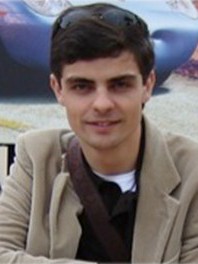resumo
The wide occurrence of pharmaceuticals in aquatic environments urges the development of cost-effective solutions for their removal from water. In a circular economy context, primary paper mill sludge (PS) was used to produce activated carbon (AC) aiming the adsorptive removal of these contaminants. The use of low-cost precursors for the preparation of ACs capable of competing with commercial ACs continues to be a challenge. A full factorial design of four factors (pyrolysis temperature, residence time, precursor/activating agent ratio, and type of activating agent) at two levels was applied to the production of AC using PS as precursor. The responses analysed were the yield of production, percentage of adsorption for three pharmaceuticals (sulfamethoxazole, carbamazepine, and paroxetine), specific surface area (S-BET), and total organic carbon (TOC). Statistical analysis was performed to evaluate influencing factors in the responses and to determine the most favourable production conditions. Four ACs presented very good responses, namely on the adsorption of the pharmaceuticals under study (average adsorption percentage around 78%, which is above that of commercial AC), and S-BET between 1389 and 1627 m(2) g(-1). A desirability analysis pointed out 800 degrees C for 60 min and a precursor/KOH ratio of 1:1 (w/w) as the optimal production conditions.
palavras-chave
PAPER-MILL SLUDGE; ADSORPTION; ADSORBENTS; INSIGHT; OPTIMIZATION; PYROLYSIS; FATE
categoria
Engineering; Environmental Sciences & Ecology
autores
Jaria, G; Silva, CP; Oliveira, JABP; Santos, SM; Gil, MV; Otero, M; Calisto, V; Esteves, VI
nossos autores
Projectos
CICECO - Aveiro Institute of Materials (UID/CTM/50011/2013)
eDYE - Engineering Dyes for Dye-Sensitized Solar Cells (IF/00973/2014)
agradecimentos
This work was funded by FEDER through COMPETE 2020 and by national funds through FCT by the research project PTDC/AAG-TEC/1762/2014. Thanks are also due for the financial support to CESAM (UID/AMB/50017-POCI-01-0145-FEDER-007638), to FCT/MCTES through national funds (PIDDAC), and the co-funding by the FEDER, within the PT2020 Partnership Agreement and Compete 2020. The work was also developed within the scope of the project CICECO - Aveiro Institute of Materials, POCI-01-0145-FEDER-007679 (UID/CTM/50011/2013), financed by national funds through the FCT/MEC. Vania Calisto also thanks FCT for her postdoctoral grant (SFRH/BPD/78645/2011). Marta Otero and Sergio Santos thank support by the FCT Investigator Program (IF/00314/2015 and IF/00973/2014, respectively).


